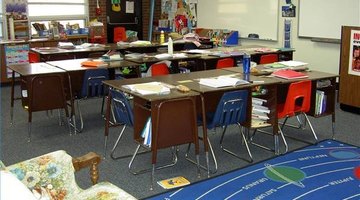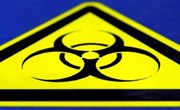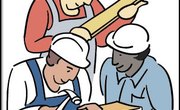Parents put their trust in schools. They expect their child is being taught in a safe environment. The teachers deserve no less and are protected from workplace safety hazards in the classroom by OSHA, a federal agency. These regulations and standards are intended to protect the employee from injuries and death in the workplace.
Facts
The Occupational Safety and Health Administration (OSHA) is a federal agency under the U.S. Department of Labor. OSHA sets regulations for workplace safety, completes inspections of the workplace, and issues citations and penalties up to $70,000. Military academies, boarding schools, preparatory schools, seminaries below university level, vocational high schools, and public and parochial elementary and secondary schools, must all follow and meet OSHA standards.
Features
Listed below are several examples of the OSHA regulations for a classroom.
Maintaining and Updating a Chemical Inventory: Schools must keep up-to-date records of the names and amounts of chemicals used in the school or classroom, as well as how the chemicals were disposed of and any incidents that may have occurred such as chemical spills. This also applies to chemicals used for experiments in science classes and labs.
Emergency Action Plan: A written plan for emergency action must be posted for employees to review. This plan must include evacuation and exit routes and a system for accounting for all employees after the evacuation.
Fire Detections Systems: The number and location of fire detection equipment must be based on valid, supported data from testing such as manufacturer's recommendations or field tests. Schools must test, adjust, and clean all fire detection equipment on a regular basis.
Medical Services and First Aid: A shower or eye flush station must be within 10 seconds of a work area where corrosive materials or chemicals are being used. First aid supplies are required at the workplace and must be stocked with absorbent compresses, adhesive bandages and tape, burn treatments, antiseptic like alcohol, medical gloves, sterile pads, and triangular bandages. These are the minimum requirements for a workplace first aid kit.
Bloodborne Pathogens: Employers must provide personal protective equipment such as gloves. These items must be accessible at the workplace, or issued directly to each employee, to help prevent the transmission of bloodborne pathogens.
Material Safety Data Sheets (MSDS): An MSDS must be on file in the school for any hazardous material. Hazardous chemicals are those that could be labeled as poisons, including cleaning materials like window and surface cleaner.
Function
OSHA is dedicated to preventing and decreasing the number of work-related safety incidents, such as injuries, sicknesses, and deaths. OSHA inspectors inspect employers to enforce the regulations and also investigate after an incident has occurred. The mission statement of OSHA is, "To assure safe and healthful working conditions for working men and women; by authorizing enforcement of the standards developed under the Act; by assisting and encouraging the States in their efforts to assure safe and healthful working conditions; by providing for research, information, education and training in the field of occupational safety and health."
Benefits
While OSHA regulations formally protect the employee, both the school districts and students benefit from the safer environment. According to OSHA, the number of occupational deaths in the workplace have been cut by 62 percent and injuries have declined by 42 percent since 1971. Fewer incidents result in fewer employee absences and increased productivity.
History
President Richard M. Nixon signed the Occupational Safety and Health Act on December 29, 1970. The first standard set by OSHA was about asbestos fibers. The current regulations require asbestos be identified in schools that are going to be remodeled or torn down by either assuming asbestos is present, or by testing for its presence.
Related Articles
References
Writer Bio
Stephanie T. Scott is a middle school English teacher in Phoenix. She holds a B.A. in journalism from Grand Valley State University and an M.Ed. in educational media and technology from Eastern Michigan University. Scott is also working on her Ed.D. in organizational leadership at Grand Canyon University.











